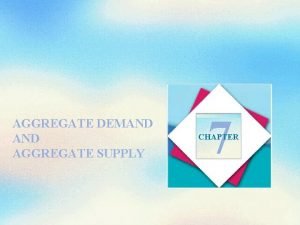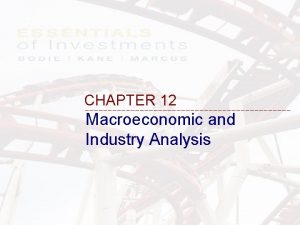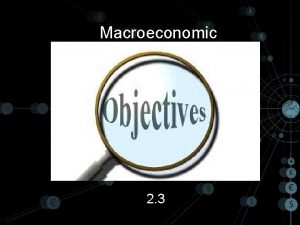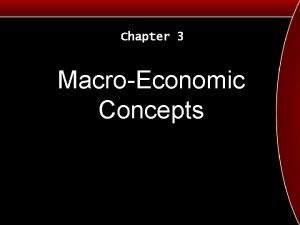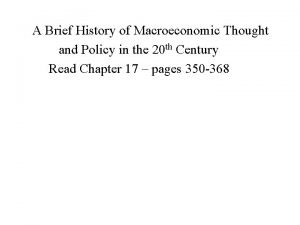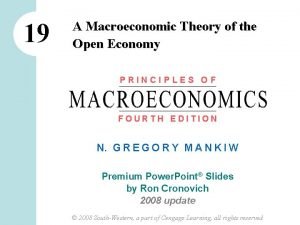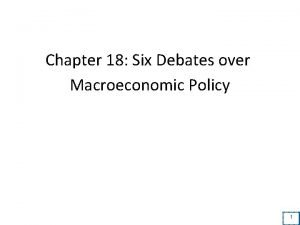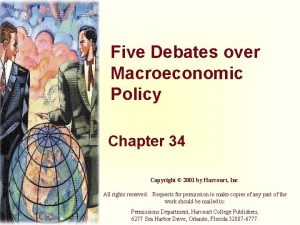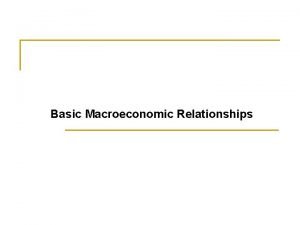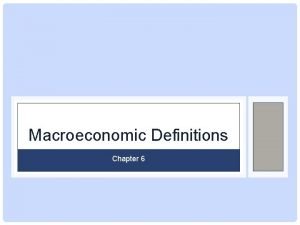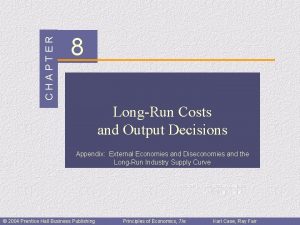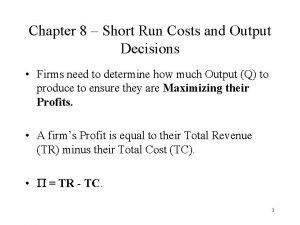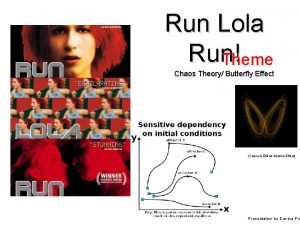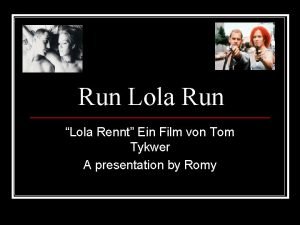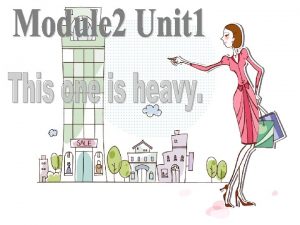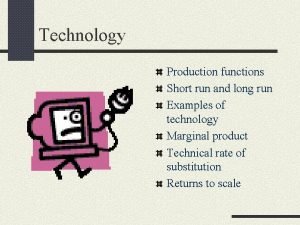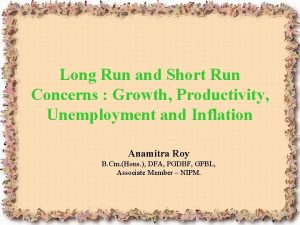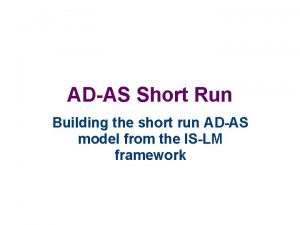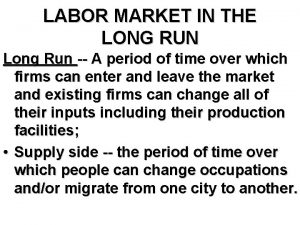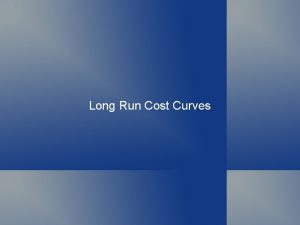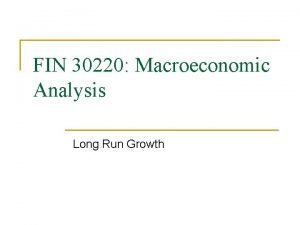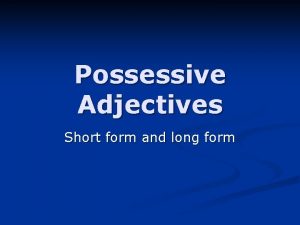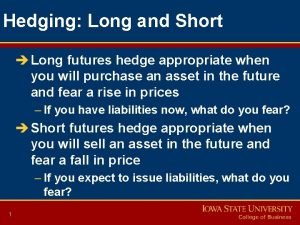Macroeconomic Long Run and Short Run The Macroeconomic

























- Slides: 25

Macroeconomic Long Run and Short Run The Macroeconomic LR Ø a time frame that is sufficiently long for the real wage rate to have adjusted to achieve full employment: § § Real GDP = potential GDP. Unemployment=natural unemployment rate. Price level determined by quantity of money (equation of exchange) Inflation rate =money growth rate minus the real GDP growth rate. The Macroeconomic SR Ø a period during which some prices or wages are sticky so § Real GDP might be below, above, or at potential GDP. § The unemployment rate might be above, below, or at the natural unemployment rate

Aggregate Supply ØThe quantity of real GDP supplied is the total quantity that firms plan to produce during a given period. It depends on § The quantity of the labor employed § The quantity of physical and human capital § State of technology ØTwo time frames associated with different states of the labor market: § Long-run aggregate supply § Short-run aggregate supply

Aggregate Supply Long-Run Aggregate Supply (LAS) Øthe relationship between the quantity of real GDP supplied and the price level when real GDP equals potential GDP. ØPotential GDP is determined by • Production function • Labor market • Independent of price level ØLR aggregate supply curve (LAS) is vertical at potential GDP.

Real Wage Determinants of LAS Labor market Real GDP Production function Price Level LAS Labor hours Real GDP Labor hours

Determinants of LAS ØChange in labor supply • immigration • taxes on employees • transfers (UI, SS) • population growth • retirement ØChange in labor demand • worker productivity (also affects PF) • taxes on employer payroll Ø Shifts in Production Function • capital/technology (also affects LD) • human capital

Graphic analysis of changes in LAS (Change in Labor Supply) Effect on • Real wage • Employment • productivity

Graphic analysis of changes in LAS (increase in labor productivity) Effect on • Real wage • Employment • Productivity

Aggregate Supply Short-Run Aggregate Supply (SAS) ØShows relationship between real GDP supplied and the price level, ceteris paribus ØA rise in the price level with no change in the money wage rate and other factor prices increases the quantity of real GDP supplied. • as P rises, real wage declines, firms want to hire more employees (movement along labor demand curve) ØThe short-run aggregate supply curve (SAS) is upward sloping.

Short Run Aggregate Supply Labor market SAS Production function As P rises, RW falls, L rises; RGDP rises

Aggregate Supply Along the SAS curve, real GDP supplied might be above potential GDP… or below potential GDP.

Aggregate Supply An increase in potential GDP shifts the LAS curve and the SAS curve shifts along with the LAS curve.

Aggregate Supply A rise in the money wage rate § Decreases short-run aggregate supply and shifts the SAS curve leftward. § Has no effect on longrun aggregate supply.

Aggregate Demand ØAD is the total amount of final goods and services produced in the United States that people, businesses, governments, and foreigners plan to buy. ØAD= C + I + G + (X – M. ) ØAD depends on § The price level § Expectations about future § Changes in wealth § Fiscal and monetary policy § The world economy

Aggregate Demand The Aggregate Demand Curve Øplots the quantity of real GDP demanded against P. Øslopes downward for 2 reasons: § Wealth effect § Substitution effects

Aggregate Demand ØWealth Effect P increases real wealth decr C decr AD decr ØSubstitution Effects • Intertemporal P incr int rate incr C & I decr AD decr • International P incr imports incr, exports decr AD decr

Shifts in Aggregate Demand Expectations about future • Increases in expected future income increases C today increases AD. • Increase in expected future inflation buying goods cheaper today increases AD. • Increase in expected future profits investment increases AD

Shifts in Aggregate Demand Fiscal Policy Øsetting and changing taxes, transfer payments, and purchasing goods and services. ØAn income tax cut or increase in transfers increases disposable income (income-taxes+ transfers) increases C increases AD ØAn increase in government spending increases G increases AD

Shifts in Aggregate Demand Monetary policy Øchanges in interest rates and the quantity of money in the economy. ØAn increase in the money supply reduces interest rates and increases aggregate demand.

Shifts in Aggregate Demand Summary: Fiscal policy Monetary policy Value of $ Foreign income

Macroeconomic Equilibrium SR Equilibrium: SAS=AD GDP can be above, below, or at potential GDP LR equilibrium LAS=SAS=AD

Macroeconomic Equilibrium Graphical illustration of SR equilibria with 1. GDP>potential GDP (inflationary gap) 2. GDP<potential GDP (recessionary gap) 3. GDP=potential GDP (LR equilibrium)

• Transition from GDP>potential GDP to LR equilibrium (inflationary gap) • Initially: • empl > equil. Empl • unempl < natural rate • R-wage < equil. R-wage • upward pressure on R-waqes • SAS shifts left until GDP=potential GDP • As economy moves to LR Equilibrium: Employment falls, Unemployment rises, Real wage rises, Real GDP falls

• Transition from GDP<potential GDP to LR equilibrium (recessionary gap) • Initially: • empl < equil. Empl • unempl > natural rate • R-wage > equil. R-wage • downward pressure on R-waqes • SAS shifts left until GDP=potential GDP • As economy moves to LR Equilibrium: Employment rises Unemployment falls Real wage falls Real GDP rises

SR/LR effect of changes in AD Effect of Increase in AD on real wage, prices, real GDP unemployment and employment.

Macroeconomic Schools of Thought ØThree broad schools of thought: § Classical §believes the economy is self-regulating and always at full employment. § Keynesian §Due to sticky wages/prices, the economy would rarely operate at full employment. §To achieve and maintain full employment, active help from fiscal policy and monetary policy is required § Monetarist §economy is self-regulating and that it will normally operate at full employment, provided that monetary policy is not erratic and that the pace of money growth is kept steady
 Short short short long long long short short short
Short short short long long long short short short Short run macroeconomic equilibrium
Short run macroeconomic equilibrium Long run market supply curve
Long run market supply curve Short run and long run equilibrium in perfect competition
Short run and long run equilibrium in perfect competition Short run vs long run economics
Short run vs long run economics Once upon a time there lived a little girl
Once upon a time there lived a little girl Từ ngữ thể hiện lòng nhân hậu
Từ ngữ thể hiện lòng nhân hậu Macroeconomic and industry analysis
Macroeconomic and industry analysis Within run and across run meaning
Within run and across run meaning Unemployment
Unemployment Macroeconomic policy debates
Macroeconomic policy debates Macroeconomic deals withसमग्रलक्षी
Macroeconomic deals withसमग्रलक्षी History of macroeconomic thought
History of macroeconomic thought A macroeconomic theory of the open economy
A macroeconomic theory of the open economy Perdebatan kebijakan makro ekonomi
Perdebatan kebijakan makro ekonomi Six debates over macroeconomic policy
Six debates over macroeconomic policy 5 debates over macroeconomic policy
5 debates over macroeconomic policy Five debates over macroeconomic policy
Five debates over macroeconomic policy Basic macroeconomic relationships
Basic macroeconomic relationships Macroeconomic definitions
Macroeconomic definitions Long run cost and output decisions
Long run cost and output decisions Short run cost and output decisions
Short run cost and output decisions Run lola run butterfly effect
Run lola run butterfly effect Run lola run editing techniques
Run lola run editing techniques Lola brigitta
Lola brigitta Lolas nn
Lolas nn

